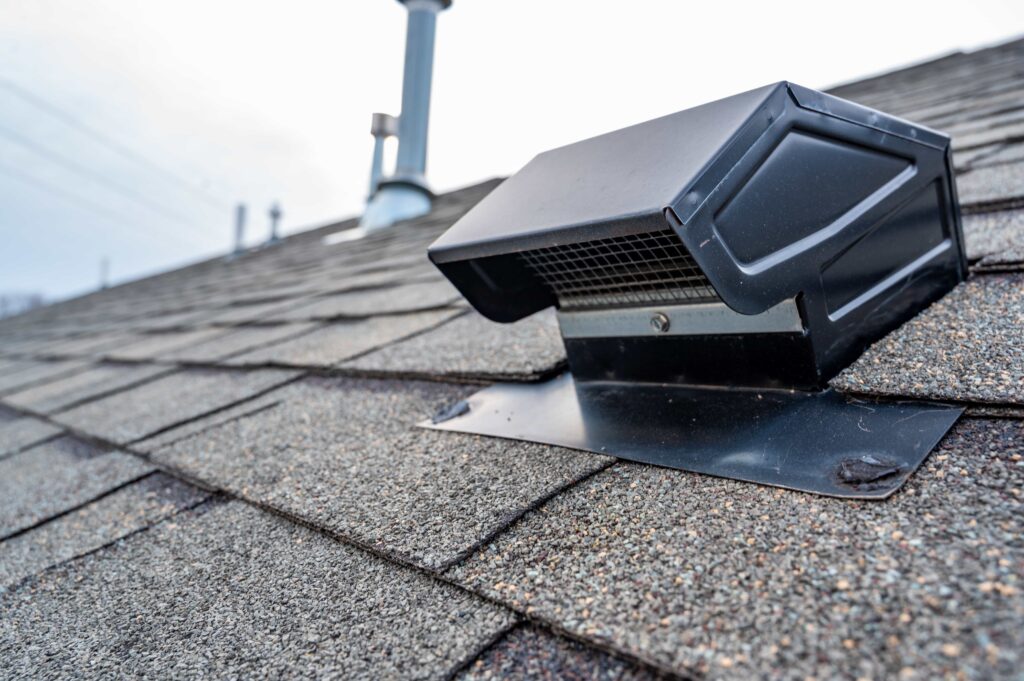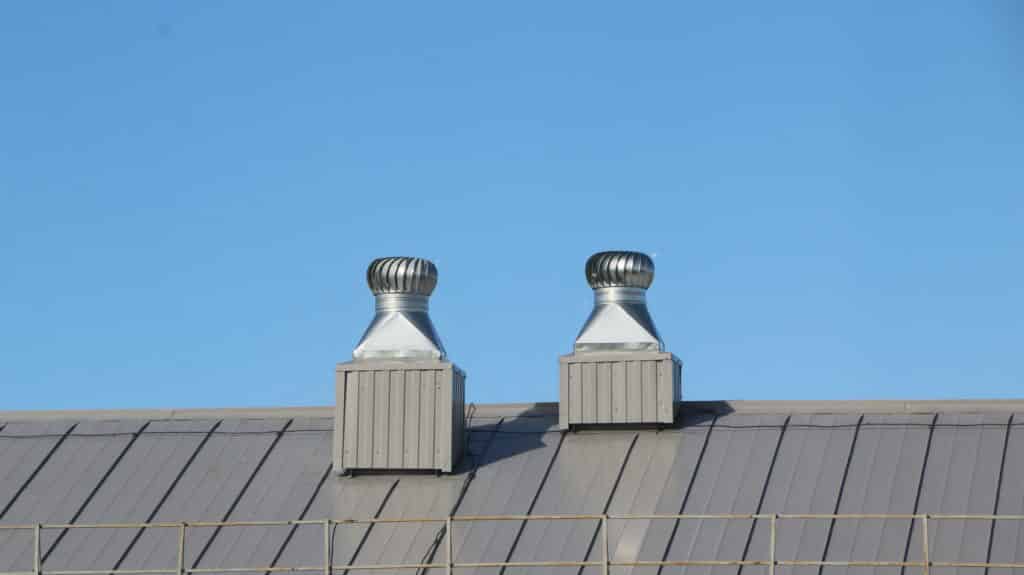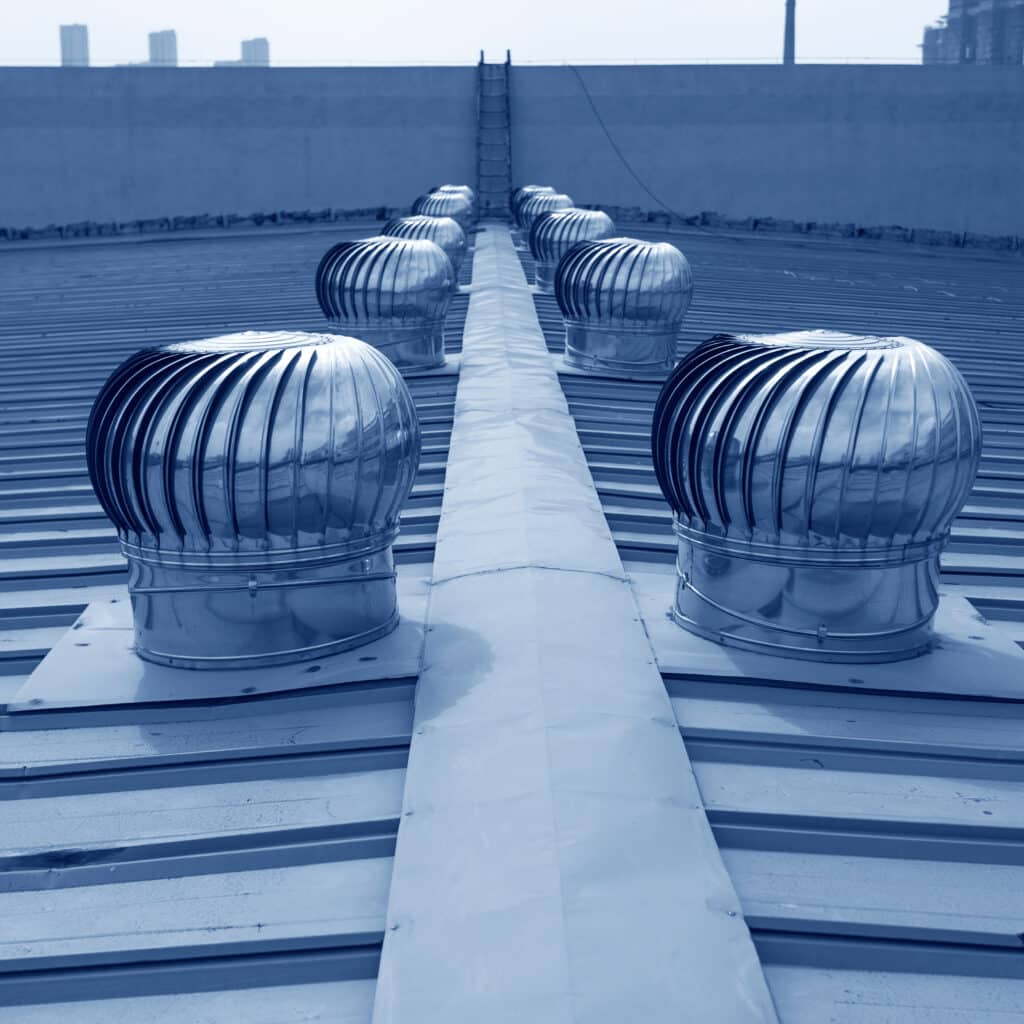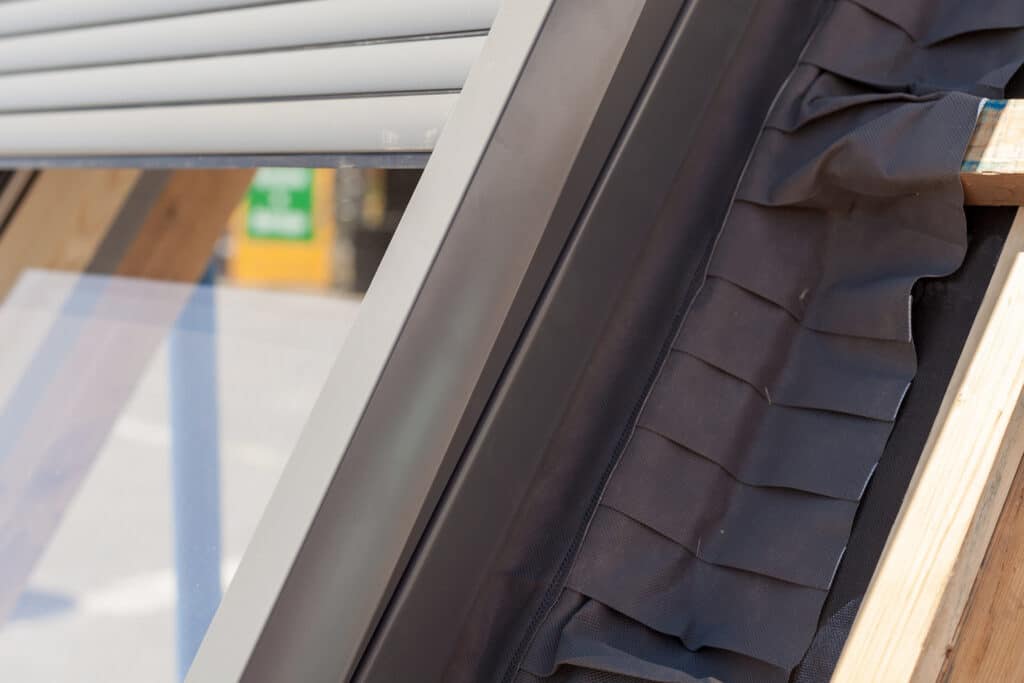Roof Ventilation and Flashing Explained
March 15th, 2023
How does roof ventilation work?
Roof ventilation is like having windows in your attic to let the hot air out and cool air in. This helps keep the whole house cooler and more comfortable, especially on hot days. Just like you need to breathe in fresh air to feel good, your house needs fresh air too!
The way roof ventilation works are by having special vents installed on the roof. These vents allow air to flow in and out of the attic, creating a draft that helps remove the hot air and bring in cool air. Think of it like a big fan that pulls in fresh air from outside and pushes out the hot air from inside.

What types of roof ventilation are available?
There are different types of roof vents, such as ridge vents, which run along the peak of the roof, or box vents, which are installed on the flat part of the roof. Some houses may even have powered vents that use electricity to move air in and out of the attic.
So, why do we need roof ventilation? Well, besides keeping the house cool, it also helps prevent moisture buildup in the attic. When hot air gets trapped in the attic, it can create condensation, which can lead to mold and other types of damage. Roof ventilation helps prevent this by allowing air to flow in and out of the attic and keep it dry.

What is roof flashing?
Now, let’s talk about roof flashing. Have you ever seen a big metal sheet around a chimney or pipe on the roof? That’s roof flashing! Roof flashing is a protective layer that’s installed around the edges of the roof and any openings in the roof, like chimneys or skylights. Its job is to keep water from leaking into the house.
But with flashing, water hits the metal sheet and slides down onto the ground, like an umbrella. This helps keep the inside of the house dry and safe. It’s like a raincoat for the house!
Flashing is usually made of metal, such as aluminum or copper. This is because metal is strong, durable, and can withstand different weather conditions, such as rain, snow, and wind.

What are the types of roof flashing?
There are different types of flashing, such as step flashing, which is used around chimneys and walls, or valley flashing, which is used in the valley of the roof where two sloping sides meet. Some flashing may even have a rubber sealant or caulking to provide extra protection against leaks.
So, in summary, roof ventilation and roof flashing are important parts of a house that help keep it cool, dry, and safe. Roof ventilation allows air to flow in and out of the attic, which helps remove hot air and prevent moisture buildup. Roof flashing is a protective layer that keeps water from leaking into the house through the roof and other openings. Just like how we take care of ourselves by staying cool and dry, we need to take care of our houses too!


